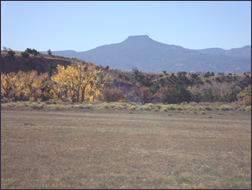 When I taught English Composition, students would come to me now and then to tell me they couldn’t write, or they hated writing. Their aversion to the course sometimes led them to avoid taking the class or dropping out or giving up, convinced they would fail no matter what. This decision had serious consequences. Without passing the required English classes, they could not receive an Associate Degree or transfer to a four year college.
When I taught English Composition, students would come to me now and then to tell me they couldn’t write, or they hated writing. Their aversion to the course sometimes led them to avoid taking the class or dropping out or giving up, convinced they would fail no matter what. This decision had serious consequences. Without passing the required English classes, they could not receive an Associate Degree or transfer to a four year college.
Often these students had struggled in English class in high school. The difficulty they had experienced and the sense of failure they felt caused pain, anger, and frustration for them. Fearing a repetition of this same discomfort in college, they had an aversion to English class and writing.
If you recall the last blog on “What Causes Suffering”, you may remember that extreme desire for something – raga – cases suffering as we intensely wish to re-experience a previous enjoyed pleasurable experience.
Aversion, called dvesa in the Yoga Sutra, is the other side of this coin. When we are caught up with dvesa, we are trying to avoid an experience that had caused us discomfort or pain in the past. This makes sense in many ways as the fear acts a protective mechanism to keep us from emotional pain.
When we experience an event or trauma creating a strong emotional response, such as anger, resentment, disgust, or fear, our consciousness is negatively affected. It is imprinted, creating what is known as a samskara. That samskara leads us to react almost without thinking. So the student with the painful experience with high school English is not thinking about how his college English experience may help him to succeed, or the support he might find, or how he may be adversely affected by dropping out. He sees the experience of college English through the glasses of his previous experience and feels fear of another bout of pain and failure. Fear keeps him from seeing the reality and possibility of the present.
While primarily the student will feel the negative consequences of avoiding college English, dvesa can manifest in ways that have far-reaching consequences. Hatred and xenophobia are extreme manifestations of dvesa, serving as the source of some anti-social and violent behavior around us. Additionally, it is important to remember that hatred and xenophobia as aspects of dvesa are both fear-driven, resulting from previous suffering.
Developing our ability to observe ourselves, svadhyaya, can help us to identify when we are experiencing dvesa. Practicing self-observation, we can notice when a feeling of aversion arises and begin asking ourselves why we are feeling as we do? What in our past may be triggering the feelings? Asking ourselves these questions can create a space between the experience and an automatic negative response. In that space we may find freedom from the bonds of our samskara so we are able to choose how we might respond.
 It is hard to give up a dream. But that is what my husband and I had to do. It started with our visits to Santa Fe, New Mexico. We enjoyed the landscape, the climate, the ambiance and everything about it. We decided to move there. It even became more of an obsession once our good friends moved there. We even had the house designed for the property we wanted, which would have made us neighbors of our friends. But it all fell through when we saw the cost and the reality that retirement was still a way off. Two more pieces of property became possibilities and both of those fell through for various reasons.
It is hard to give up a dream. But that is what my husband and I had to do. It started with our visits to Santa Fe, New Mexico. We enjoyed the landscape, the climate, the ambiance and everything about it. We decided to move there. It even became more of an obsession once our good friends moved there. We even had the house designed for the property we wanted, which would have made us neighbors of our friends. But it all fell through when we saw the cost and the reality that retirement was still a way off. Two more pieces of property became possibilities and both of those fell through for various reasons.  Check out last week’s blog –
Check out last week’s blog – Correct perception characterizes the state of yoga. We see a situation clearly; we base a decision on our perception; we act on the decision, and things go well. Without correct perception, we have no clarity. A decision is then based upon misunderstanding, and when we act based upon misunderstanding, things do not go well. Suffering then results for us and perhaps others.
Correct perception characterizes the state of yoga. We see a situation clearly; we base a decision on our perception; we act on the decision, and things go well. Without correct perception, we have no clarity. A decision is then based upon misunderstanding, and when we act based upon misunderstanding, things do not go well. Suffering then results for us and perhaps others.  Autumn marks the transition to longer hours of darkness. While many of us welcome the beauty and cooling temperatures of the season, many start to anticipate, with some anxiety and dread, cold, snow, and barren landscapes.
Autumn marks the transition to longer hours of darkness. While many of us welcome the beauty and cooling temperatures of the season, many start to anticipate, with some anxiety and dread, cold, snow, and barren landscapes.